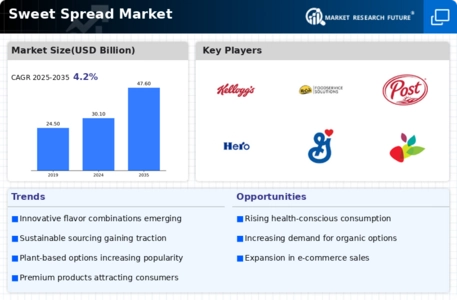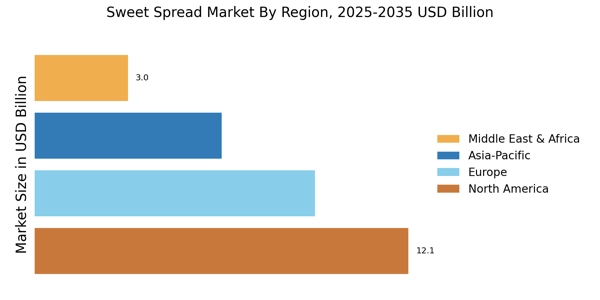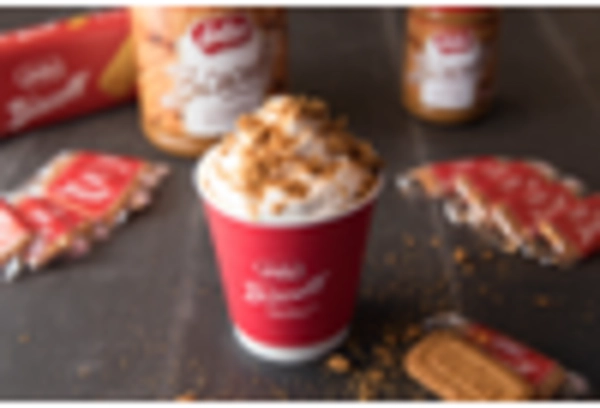E-commerce Growth
The rise of e-commerce is significantly impacting the Sweet Spread Market, as more consumers turn to online shopping for their grocery needs. The convenience of purchasing sweet spreads online, coupled with the ability to access a wider variety of products, is driving this trend. Data suggests that online sales of sweet spreads have increased by over 30% in the past year, reflecting a shift in consumer purchasing behavior. This growth in e-commerce is prompting brands to enhance their online presence and invest in digital marketing strategies to reach consumers effectively. As a result, the Sweet Spread Market is likely to see continued expansion through online channels, providing opportunities for brands to engage with a broader audience and adapt to changing consumer preferences.
Flavor Innovation
Flavor innovation plays a crucial role in the Sweet Spread Market, as consumers increasingly seek unique and diverse taste experiences. The demand for exotic flavors and combinations has prompted manufacturers to experiment with ingredients, leading to the introduction of innovative products that cater to adventurous palates. For instance, spreads infused with spices, herbs, or unusual fruits are gaining traction, appealing to consumers looking for something beyond traditional options. This trend is supported by market data indicating that flavor innovation can lead to a 15% increase in sales for new product launches. As a result, brands are investing in research and development to create distinctive flavors that resonate with consumers, thereby enhancing their competitive edge in the Sweet Spread Market.
Health-Conscious Choices
The Sweet Spread Market is experiencing a notable shift towards health-conscious choices among consumers. As individuals become increasingly aware of the nutritional content of their food, there is a growing demand for spreads that are low in sugar and high in natural ingredients. This trend is reflected in the rising popularity of organic and natural sweet spreads, which are perceived as healthier alternatives. According to recent data, the market for organic sweet spreads has expanded significantly, with a compound annual growth rate projected at over 8% in the coming years. This shift not only influences product formulations but also drives brands to innovate and create healthier options, thereby reshaping the Sweet Spread Market landscape.
Sustainability Initiatives
Sustainability initiatives are becoming increasingly relevant within the Sweet Spread Market, as consumers express a preference for environmentally friendly products. Brands are responding by adopting sustainable sourcing practices and eco-friendly packaging solutions. This shift is driven by a growing awareness of environmental issues and a desire among consumers to support brands that align with their values. Recent surveys indicate that nearly 70% of consumers are willing to pay a premium for products that are sustainably sourced. Consequently, companies are investing in sustainable practices, which not only enhance their brand image but also contribute to the overall growth of the Sweet Spread Market. This focus on sustainability may lead to a more responsible and ethical market landscape.
Convenience and Accessibility
Convenience and accessibility are pivotal drivers in the Sweet Spread Market, as busy lifestyles prompt consumers to seek quick and easy meal solutions. Ready-to-use sweet spreads that require minimal preparation are increasingly favored, particularly among working professionals and families. The rise of single-serve packaging options has also contributed to this trend, allowing consumers to enjoy sweet spreads on-the-go. Market analysis reveals that products designed for convenience have seen a sales increase of approximately 20% over the past year. This focus on convenience not only caters to consumer preferences but also encourages brands to enhance their distribution channels, ensuring that sweet spreads are readily available in various retail formats, thus expanding their reach within the Sweet Spread Market.


















Leave a Comment